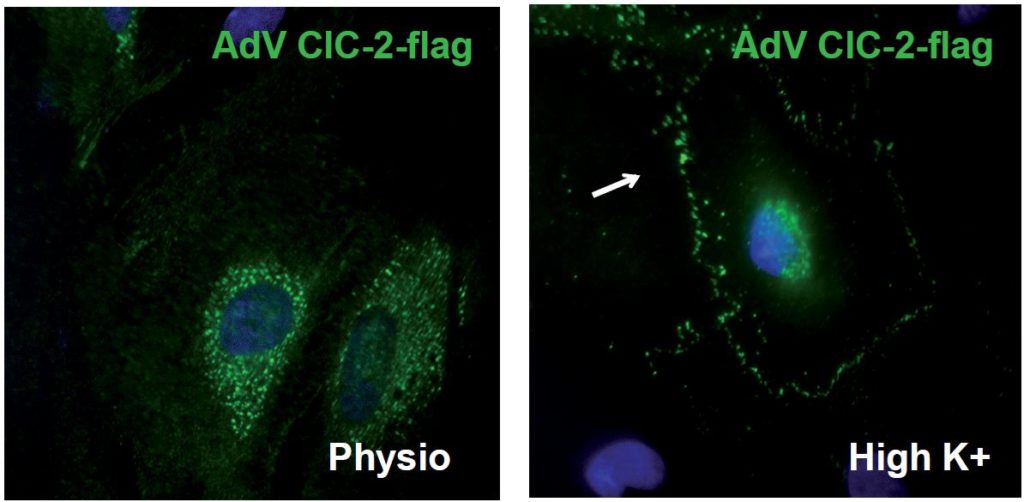This paper, published in Human Molecular Genetics, addresses the pathophysiology of megalencephalic leukoencephalopathy (MLC) in astrocytes. Its main authors are Sonia Sirisi, Xabier Elorza-Vidal and Tanit Arnedo – affiliated to UB-IDIBELL and CIBERER. The work was co-directed by Xavier Gasull (Institute of Neurosciences-UB and IDIBAPS) and Raúl Estévez (Institute of Neurosciences-UB, IDIBELL and CIBERER), in collaboration with Virginia Nunes (UB, IDIBELL and CIBERER). T
he study concluded that ClC-2 (chloride channel), GlialCAM and MLC1 proteins (the latter two are altered in MLC) associate to form a ternary complex when astrocytes are depolarized, such as in situations of high neuronal activity. This association changes the voltage activation of the ClC-2 channel, which leads it to be open to positive potentials, allowing it to participate in the compensation of positive charges in the glial cells introducing chloride.
Thus this work assigns a physiological function to the ClC-2 channel and allows to describe an altered pathophysiological process in MLC, which is necessary to design future therapeutic interventions. This work also hypothesizes what the biochemical function of GlialCAM / MLC1 proteins might be.
Sònia Sirisi, Xabier Elorza-Vidal, Tanit Arnedo, Mercedes Armand-Ugón, Gerard Callejo, Xavier Capdevila-Nortes, Tania López-Hernández, Uwe Schulte, Alejandro Barrallo-Gimeno, Virginia Nunes, Xavier Gasull, Raúl Estévez. Depolarization causes the formation of a ternary complex between GlialCAM, MLC1 and ClC-2 in astrocytes: implications in megalencephalic leukoencephalopathy. Human Molecular Genetics doi: 10.1093/hmg/ddx134

